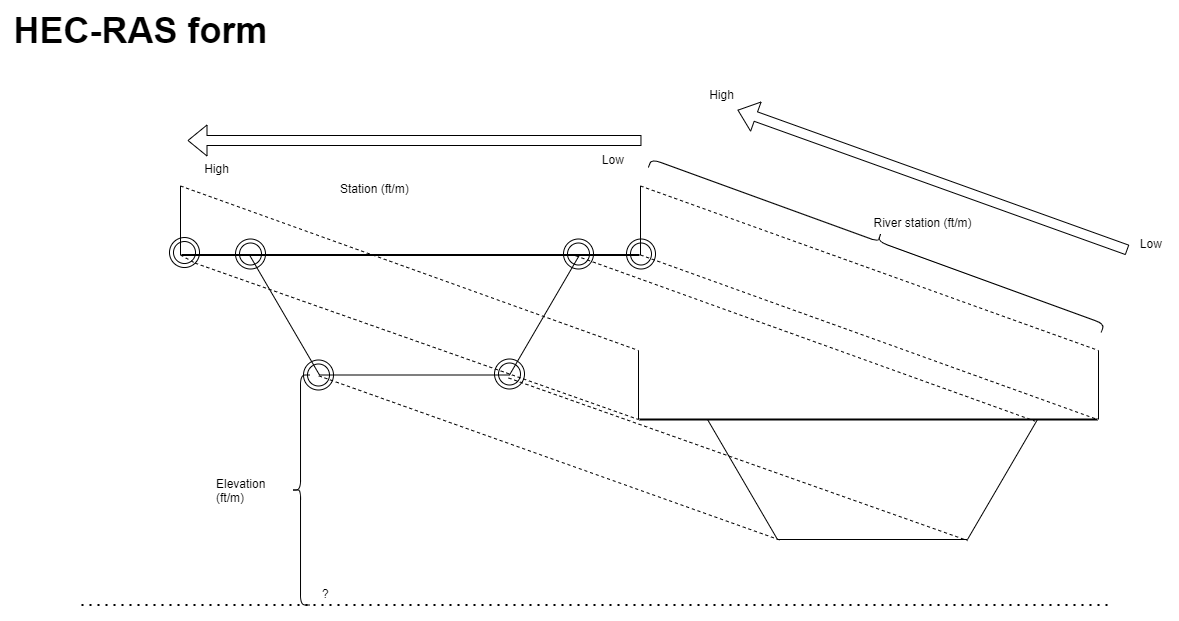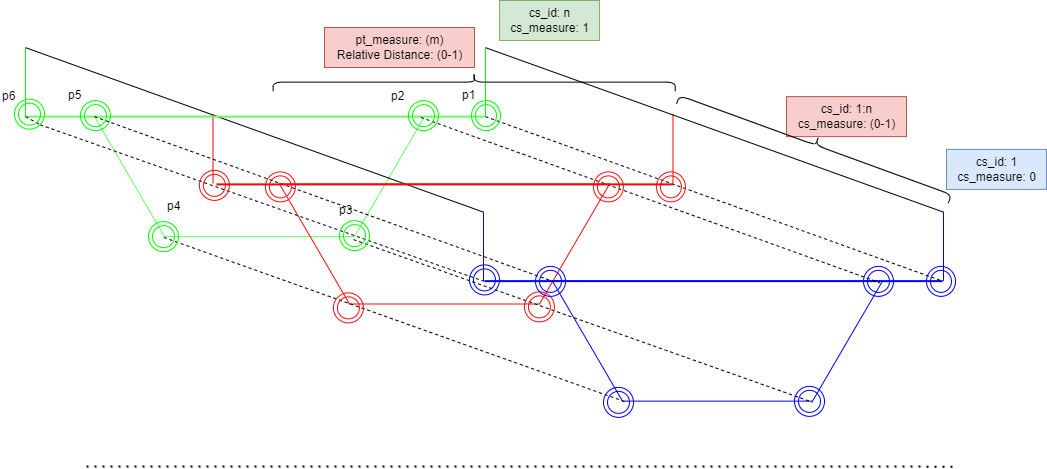Cross Section Data Model Comparison and Interoperability Crosswalk
Although they proport to represent the same concepts, many of the different forms of cross sections and cross section data you might encounter are formatted in application-specific ways. This makes describing the system difficult not only because we typically lack an application to point to when talking about the generic “cross section” concept, but also because each user comes to the table with there own preconceptions and assumptions about how that data ought to be formatted and dimensionally constrained. This is my attempt to harmonize the different forms into the hydrofabric standard.
As alluded to, HEC-RAS data is not the hydrofabric transect data model but can be made compliant with a little extra explainability. Here I’ll explore the most common forms we come across HEC-RAS transect data, the HEC-RAS models themselves, the RRASSLER catalog data, the MIP database, and the Hydrofabric3D format. For convenience, here are those formats in a single place:
Independent data models
see the HEC-RAS page for more information. The HEC-RAS data standard is a fun mesh of sidecar files that all need special parsing to transform to a more useful spatial format.
As HEC-RAS artifacts
Harmonizing the models
As we can see, there are a number of small variations and subtle nuances to the way applications needed to schematically represent the concept of a cross section. The cleanest way to conceptually harmonize these is:

